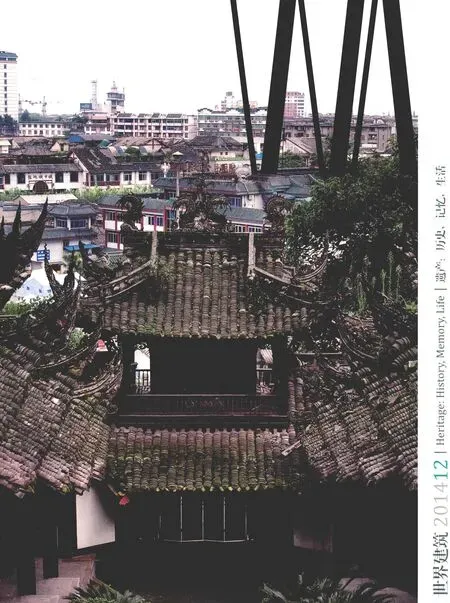汉阳陵帝陵外藏坑保护展示厅,西安,陕西,中国
项目设计:刘克成/西安建筑科技大学
汉阳陵帝陵外藏坑保护展示厅,西安,陕西,中国
项目设计:刘克成/西安建筑科技大学
汉阳陵始建于公元前153年,位于泾渭交汇的五丈塬,是汉景帝刘启与王皇后同莹异穴的合葬陵园,以及第五批全国重点文物保护单位。
汉阳陵规模宏大,格局完整,文物埋藏丰富。古人依据“视死如生”的理念,围绕帝陵封土建设有84道大型外藏坑。2001年,西安建筑科技大学古迹遗址保护工程技术研究中心通过国际竞赛获得汉阳陵帝陵外藏坑A段保护展示厅建筑设计权。
由于项目紧邻帝陵封土,为了更好地保护文物及陵园环境,设计将整个建筑置于地下,充分体现了保护文物及其历史环境完整性和真实性的国际先进理念,达到了“大象无形,气象万千”的环境意象,开创了中国新一代的遗址博物馆模式。
设计还运用先进科技,创造性地将遗址环境与参观环境分离,封闭模拟文物埋藏环境,为文物保护和考古提供了良好的条件,为国内外同类型文物遗址保护以及遗址博物馆建设提供了新的典范。
设计始终以文物为主体,以文化为主线,根据汉阳陵文物的特点,通过精心的路线设计、材料选择和灯光照明,有意识淡化了建筑本体,为游客提供了观察文物的不同角度,从多层次揭示了文物的文化内涵,营造了一个充满吸引力的文化环境。
该项目是我国第一座近帝陵封土,对遗址实现全封闭保护的现代化全地下遗址博物馆。国际古迹遗址理事会主席米歇尔·佩赛特先生题词盛赞此项目:“这是一项杰出的成就,是国际古迹遗址保护的典范。”
项目信息/Credits and Data
业主/Client:汉阳陵博物苑/Museum of Yangling Emperor Mausoleum of Han Dynasty
总建筑面积/Gross Floor Area:6931m2
建筑高度/Building Height:13.1m(全地下)/13.1 m (all underground)
建筑层数/Building Stories:地下局部3层/Partially 3 floors underground
Situated at Wuzhangyuan Town where the Jing River and the Wei River converge, the Yangling Mausoleum built in 153 B.C. is a joint tomb of Liu Qi, Emperor Jingdi, and his express, Empress Wang. It is listed as the fifth batch of important heritage site under state protection.
Featuring majestic scale and complete layout, the Yangling Mausoleum is rich in underground relics. The ancient Chinese believed that "a person after death would continue his life in another world" and so they built 84 large-scale burial pits around the mound. In 2001, the Research Center of Monuments and Sites Preservation Engineering and Technology of Xi'an University of Architecture and Technology obtained the opportunity to design a section of the preservation exhibition buildings of the outer burial pits for the Yangling Mausoleum via international competitions.
Since the project is situated in the immediate vicinity of the mound, the buildings are designed entirely underground for better protection of the relics and Mausoleum's environment. This fully reflects the advanced international concepts of protecting relics and its integrity and reality in view of historic environment, and presents an environmental image that "the universe is invisible but all-inclusive and spectacular", creating a model for new generation of Chinese site museums.
Furthermore, creative separation of the site environment from the visit space to seal and simulate the original appearances of the buried relics with the use of advanced technology in design not only provides a preferable condition for the preservation of relics and the implementation of archaeological work but also sets up a typical example for the construction of the relic sites and museums of the same kind, both domestic and abroad.
Relics-based and culture-centered concerns are always given during design. The well-designed routes, selective materials and lightings in line with the characteristics of the relics in Yangling Mausoleum of Han Dynasty make a conscious reduction in the buildings themselves so as to unveil the relics from different perspectives for the visitors, thereby revealing the cultural connotation beneath the relics at different levels and creating an attractive cultural environment.
This project is the first domestic case in which a mound is close to the Emperor's tomb chamber and also a whole modern underground site museum is under protection in a fully closed manner. Mr. Michelle Petzet, the president of the International Council on Monuments and Sites, praised it in his inscription that "This is an outstanding achievement and a typical example of the international protection of Monuments and Sites."
1-主入口/Main entrance
2-下沉庭院/Sunken garden
3-门厅/Lobby
4-坡道/Rampway
5-遗址展示厅序厅/Front hallof exhibition hall for the site
6-遗址展示厅/Exhibition hall for the site
7-外藏坑/Outer burial pits
8-环廊/Corridor
9-空中廊桥/Air lounge bridge
10-上通廊/Upper corridor
11-下通廊/Lower corridor
12-虚拟成像影视厅/Virtual imaging cinema
13-展示厅/Exhibition hall
14-休息厅/Lounge
15-卫生间/Toilet
16-设备用房/Equipment room
17-紧急出口/Emergency exit
18-预留未来接口/Future interface
19-主出口/Main exit
评论
朱光亚:和以往的保护展示厅相比,该项目确实是开辟了我国新一代的考古遗址保护展示模式,整个建筑隐于地下,保持了汉阳陵周围空旷、雄浑的原野气氛,将遗址考古和参观游览组织成各自独立的游线和互不干扰的空间,既有利于考古工作获得良好工作条件且不受干扰,又使游客亲历考古环境获得对古代历史的神秘与深沉的感受,建筑师对古代文化的深刻理解和尊重使他不必再为风格、形式纠缠,而关注更为深层问题的探讨。
孟建民:先进科技,保护为本
汉阳陵帝陵外藏坑保护展示项目,经过设计者的精心考量和设计,达到了完整、真实地再现历史文物和历史环境的目的。
项目设计理念先进,处理方式得当,使得遗址环境和参观环境相分离。路线、材料、灯光的选择和设计,运用先进科技的优势,使得建筑空间虚实结合。根据汉阳陵文物的特点,以文化为主线,重在文物,淡化建筑本体。这些设计做法,利于参观者多视角观赏历史文物,多层次感受历史文化的内涵,也利于管理者的管理和保护。
这个项目是国际古迹遗址保护的典型案例。
Comments
ZHU Guangya: Compared to other protection exhibition halls, this project established a brand-new model for protecting archaeological sites in China. Hidden under the ground, the entire building remains the openness and wildness of the area around the Hanyang Mausoleum. The Hall is divided into two separated spaces respectively for the relics and tourism, which is not only conducive to create an undisturbed working condition for archaeologists, but also allows visitors to personally experience the archaeological environment, feeling the mysterious and rich ancient history. The architect who has deeper understanding and respect for the ancient culture attaches more importance to the in-depth issues instead of its style and form.
MENG Jianmin: Advanced technologies for heritage conservation
After the designer's elaborative design, the project successfully realizes its goal of representing the heritage and environments in a comprehensive and authentic way.
Supported by advanced design concept and appropriate method, the design separates the heritage environment from the visit environment. The selection and design of the route, material, and luminaire, in combination with advanced technologies, realizes an architectural space composed of both solid and illusory elements. Based on the characteristics of Hanyang Mausoleum, the design highlights the cultural relics with the relevant culture as the main line, and dilutes the architecture body. All these design methods not only make it possible for visitors to appreciate the historic cultural relics from different perspectives so that they can feel the connotation of the history and culture at multiple levels, but also provide convenient conditions for managers' management and protection of the site.
The project can be regarded as a typical case of international heritage conservation.
Preservation Exhibition Hall for the Outer Burial Pits of Imperial Mausoleum in Yangling of the Han Dynasty, Xi'an, Shaanxi, China, 2006
Project Design: LIU Kecheng/Xi'an University of Architecture and Technology

